Forget glamping – these smart gadgets changed how I’ll camp forever
These smart camping gadgets changed my festival experience forever
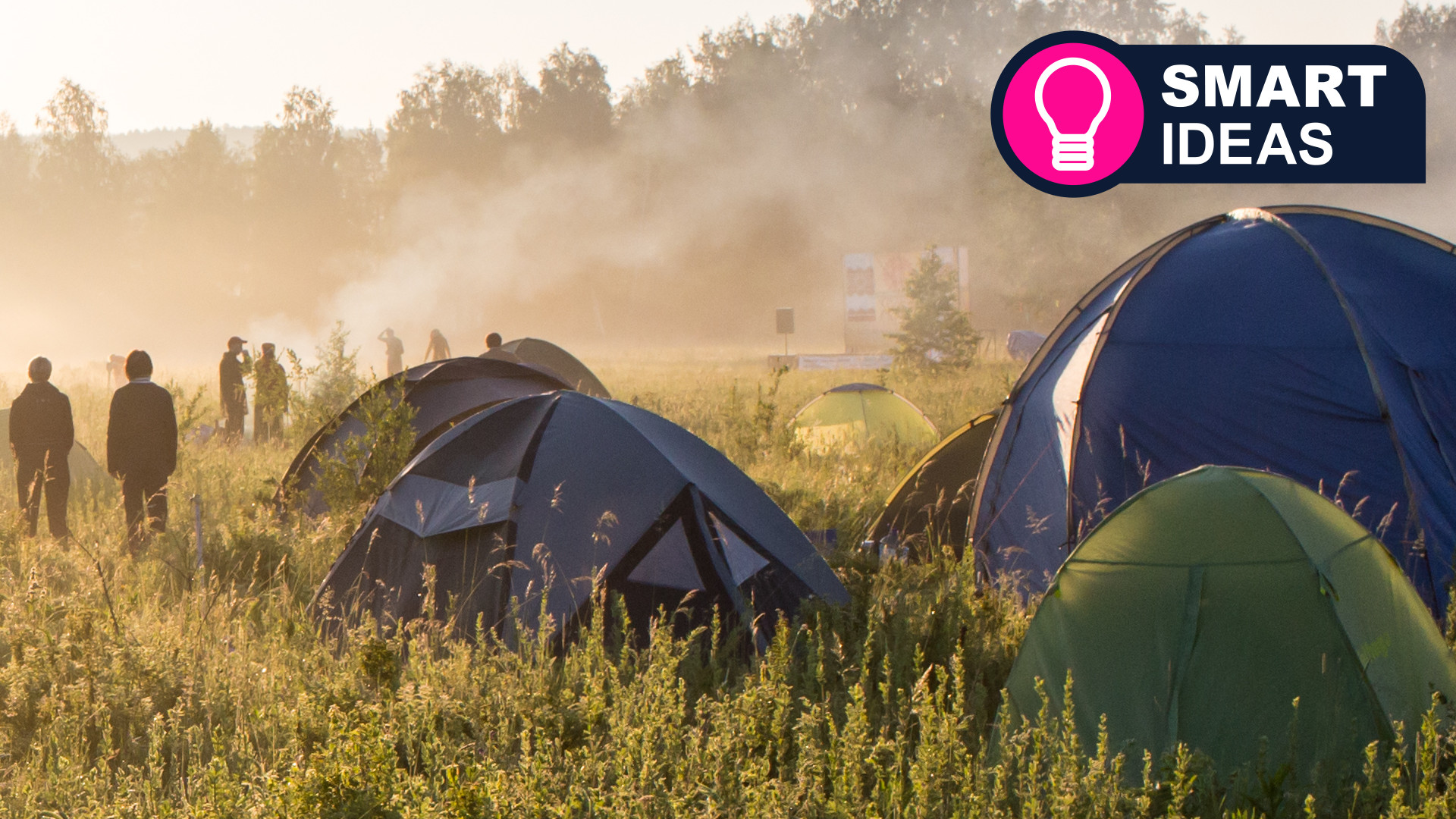
I love camping, especially when attending music festivals, but I’m no longer the young man I once was, happy to battle with a cheap tent in a muddy, rain-lashed field, sleeping on a gossamer-thin mat with an inflated bag from an empty wine box as a pillow. These days, I like a bit of comfort and convenience, so when I snagged tickets for Glastonbury, one of the largest festivals in the world, I decided to look into bringing some smart camping gadgets that would – let’s be honest – stop me from dying.
This is the fifth in a regular series of articles exploring smart tech that exists to make your life easier. Read them all here.
OK, that might be a bit dramatic, but I wanted to be comfortable. Is that too much to ask? Well, thanks to modern camping technology, for five hazy days I lived like a kind of Lord of the Tents in a Somerset field.
Here’s a rundown of what I took on my camping trip, and how it helped me live my best high-tech life (while also enjoying the festival).
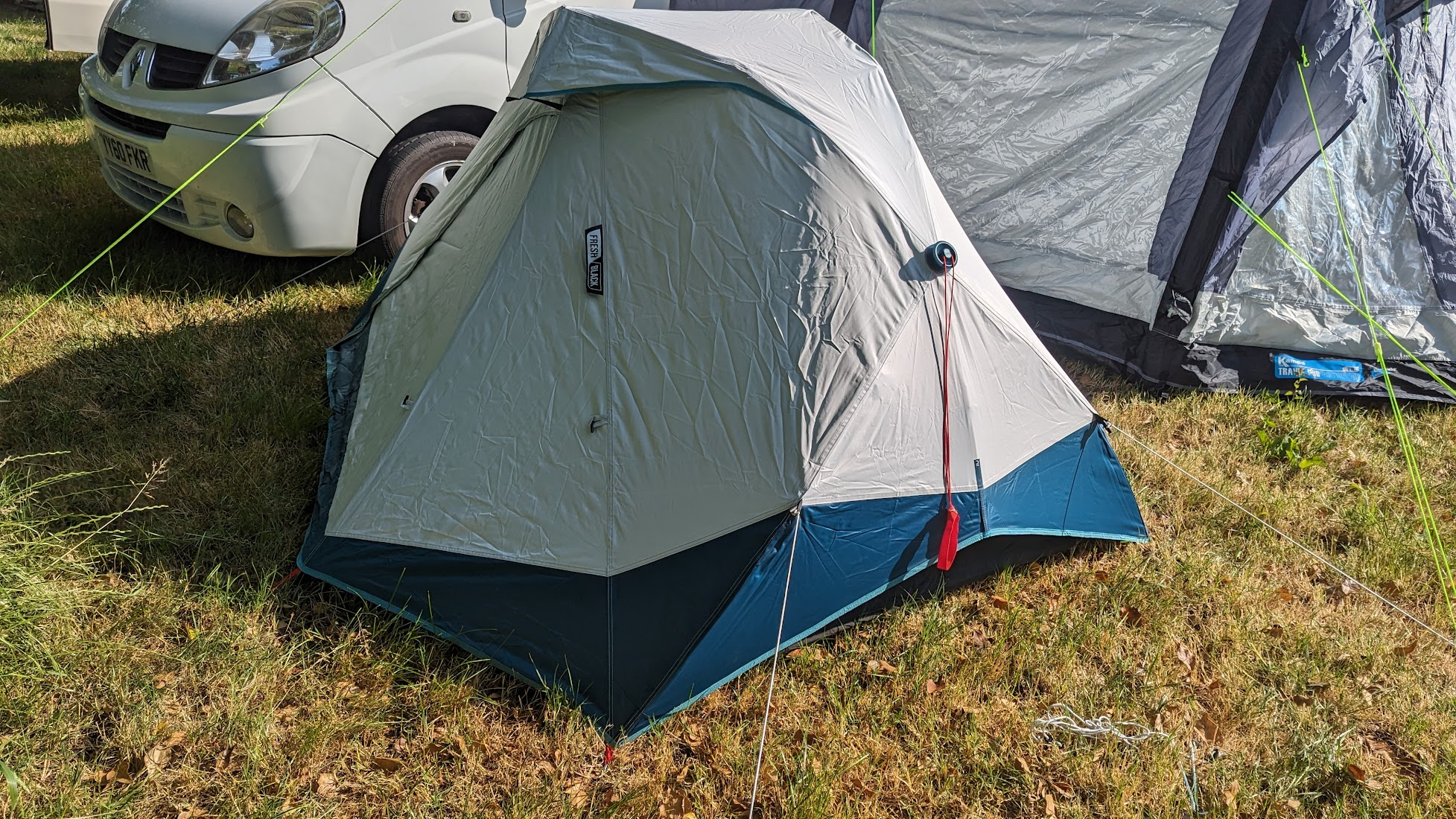
Tent: Decathlon 2 Man Blackout Tent
Can a tent be smart? Surely it’s just a piece of fabric to keep you warm and dry? Well, if you think ‘smart’ has to mean ‘internet connected’ then sure, it’s probably quite hard to find a smart tent.
But if something has a clever design that makes your life easier, surely that’s smart as well – even if there’s no need for Wi-Fi, a battery or any kind of high-tech gubbins.
That’s why I picked the Decathlon 2 Man Blackout Tent, as it comes with a unique design that allows it to be set up in, as Decathlon promises, just two seconds.
In the past, I’ve found the process of setting up a tent to be one of the worst things about camping, closely followed by the process of taking the tent down. So, if the Decathlon 2 Man Blackout Tent can speed up the process and give me more time to crack open the lukewarm cocktails, then I’m all for it!
Sign up for breaking news, reviews, opinion, top tech deals, and more.
It comes in a compact and easy-to-carry case, and when you unravel it, you simply place it on the floor and pull a string on each side, which almost instantly pops up the tent. It’s a lot like opening an umbrella. Amazingly, if you have a person on each end to pull the ropes, it really does take two seconds to set up. You then just need to hammer in the tent pegs.
It’s not the biggest tent in the world, which meant some of my gear had to be stored in a separate awning, but the speed and ease of setting it up was seriously impressive.
Perhaps even better, the “Fresh & Black technology” kept the inside of the tent pretty much pitch black, so it kept cool throughout the day, and meant I wasn’t woken up as soon as the sun rose in the morning.
Collapsing the tent at the end of the festival was perhaps even easier – you just press two buttons and then roll it all up. This was one of the most impressive bits of kit I brought with me, as it was well built, easy to use and genuinely made one of my least favorite aspects of camping a piece of cake.
While this exact tent isn't available in the US, there are a variety of other options at Decathlon, and Amazon has a great selection of similar tents.
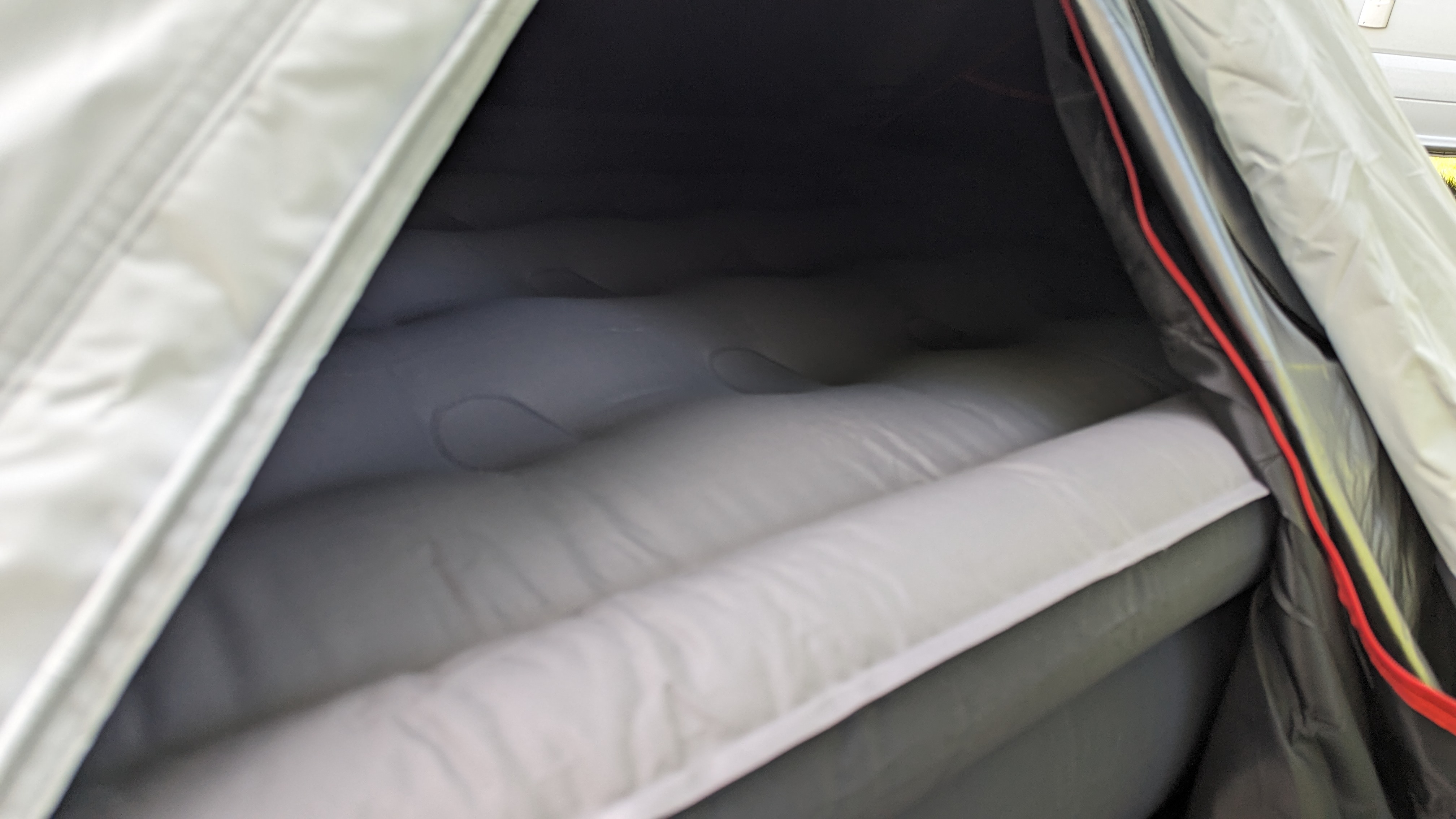
Mattress: iDOO Inflatable Airbed with Built-in Pump
After a hard day hiking/walking/standing/drinking/dancing, I want to come back to some comfort, especially at an event as huge as Glastonbury. So, I wanted to bring along an air bed that would keep me comfy, wouldn’t deflate, and would be easy to set up (there’s a theme here; I’m lazy).
So, I brought along the iDOO Inflatable Airbed with Built-in Pump. I loved the look of it, as unlike previous airbeds I’ve tried, this was tall – which meant I would be lifted well above the ground, making it easy to get in and out of bed, while also keeping me from feeling all the rocks and hard ground beneath me.
It also comes with a built-in pump, which makes packing easier. One thing to note is that the pump isn’t battery-powered, so you need to plug it into a power source. If you’re camping somewhere with electricity hookups, or near your vehicle, then that’s fine – but if you’re camping off the beaten track, then that could pose an issue. Luckily, I had a solution (which I’ll get to in a moment).
When hooked up to power, you turn a knob and the mattress starts inflating by itself – so no need to tire myself out using a foot pump, and plenty of time for another cocktail! It only took around two minutes to fully inflate, but there was another (slight) issue – the double iDOO Inflatable Airbed with Built-in Pump is BIG when full of air.
While the Decathlon 2 Man Blackout Tent can hold a double mattress, because of the height of the iDOO Inflatable Airbed and the low profile of the tent, I really didn’t have much room above me. At events (like a music festival) where you’re not spending much time in your tent, that’s not too much of an issue, but it’s something to bear in mind.
However, when sleeping on it, the height was totally worth it. This is a seriously comfy airbed, offering a firmness that, combined with the blackout tent, meant I slept incredibly well. The built-in pump can also be used to deflate the airbed, so when it came to packing up, it took a matter of minutes.
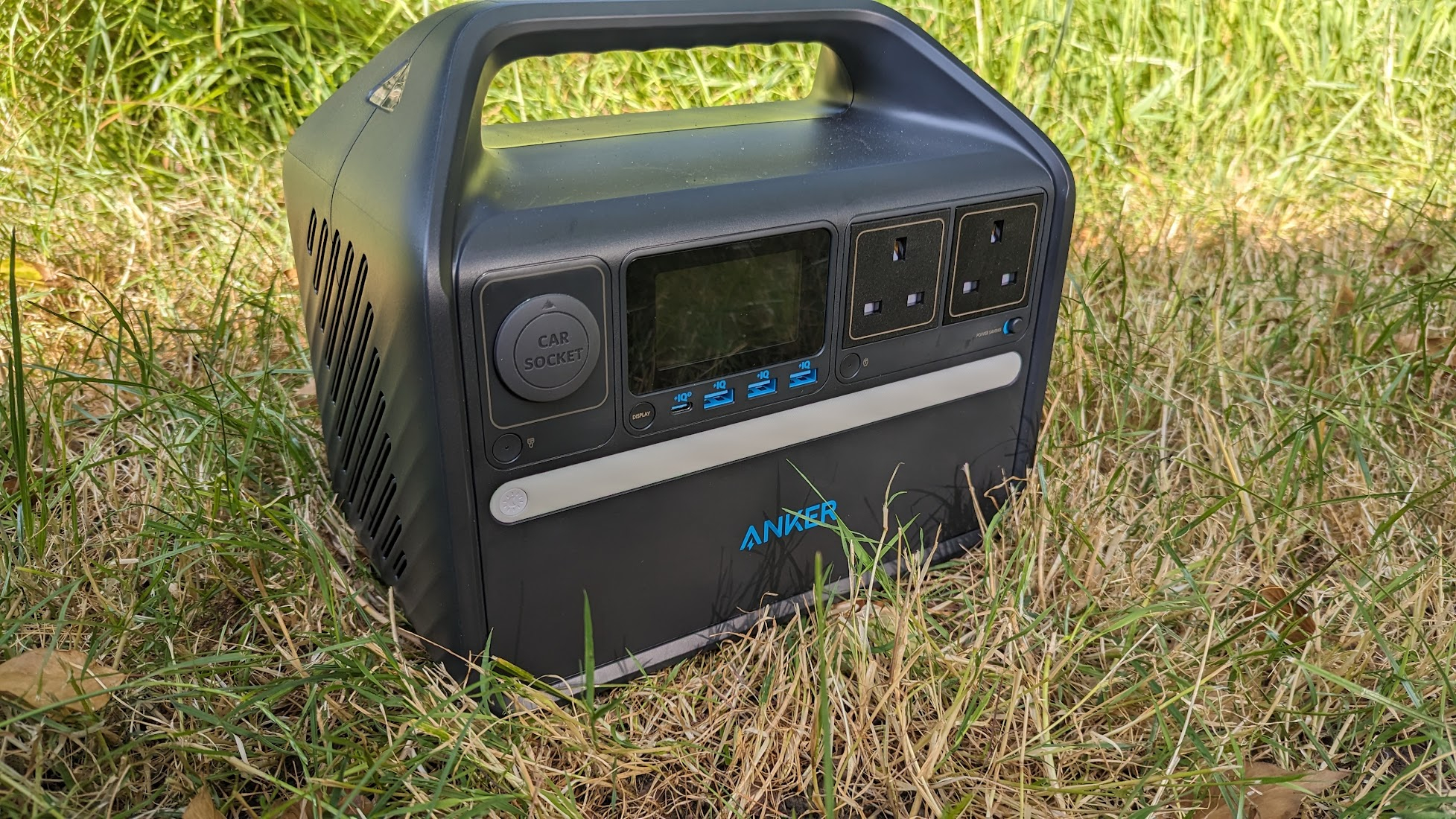
Power bank: Anker 535 portable power station and Excitrus Power Bank Ultimate
For many people the appeal of camping is getting away from it all and reconnecting with nature. I get that. But when camping at a music festival, many of us want to take devices like smartphones with us.
At Glastonbury, my phone (the Google Pixel 7 Pro) didn’t just help me keep in contact with the people I went with – which is important – but it was also my camera, and with the official app, I was also able to keep track of who was playing and where. I also wanted to bring my smartwatch, the Pixel Watch, so I could keep track of the time and get notifications without having to pull out my phone amongst large crowds, and also keep track of my steps.
That’s why I took along the Anker 535 portable power station. This is a formidable bit of kit that you charge up at home and offers 512Wh of power. According to Anker, it can charge a MacBook Air more than eight times from a single charge, power a fan for 10.9 hours, and run a fridge for 8.5 hours.
It comes with a decent selection of USB ports, as well as wall power outlets (offering up to 500W output). So you can run both mobile devices and home appliances. This is useful if there’s a power cut, and when camping it allowed me to use the built-in pump of the iDOO mattress. It also meant that myself and the people I camped with could all charge our devices at the same time. Over five days of charging three smartphones, a smartwatch, and various other gadgets, the Anker 535 portable power station still had over 70% of its charge left.
It was seriously impressive – and it even helped me at home when I had a power cut shortly after the festival. Despite not charging it since the beginning of summer, it still had plenty of charge that allowed me to run my laptop and top up my phone until the power came back on.
Perhaps unsurprisingly, the Anker 535 is very big and bulky, which doesn’t make it the most convenient of devices to carry around. If you’re pitching your tent near a vehicle, it’s not too bad, but for long treks, you’ll want something more portable.
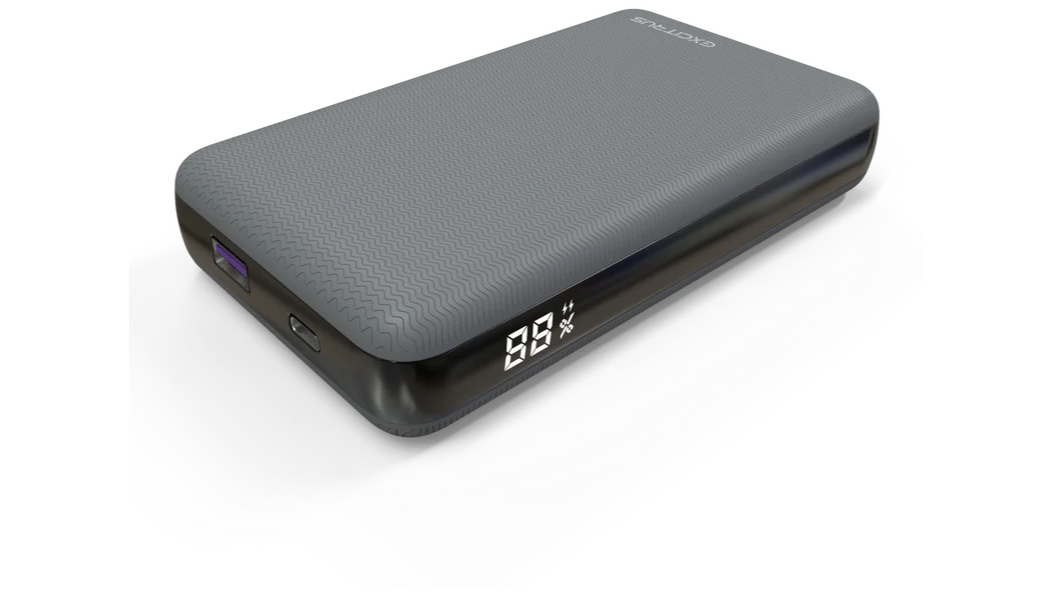
So, I also brought along the Excitrus Power Bank Ultimate. This power bank easily sits in a bag (or large pocket), with two outputs for charging two devices at once. I used it when I was away from my tent throughout the day, and it allowed me to charge my phone and smartwatch while out and about. Its 18,000mAh battery is enough to charge my phone a few times over – and when I got back to the campsite, I plugged it into the Anker 535 to recharge overnight.
While it’s nice to use camping as an excuse to turn off our devices and disconnect, the fact is that we rely on our phones for so many things, so keeping them topped up is important – especially if you need it to contact people. Thanks to both the Anker 535 and the Excitrus Power Bank Ultimate, plus the battery saving setting on my Pixel 7 Pro, which turned off background apps and other power-sipping features, I was able to keep my smartphone going during the five days I was camping in a field.
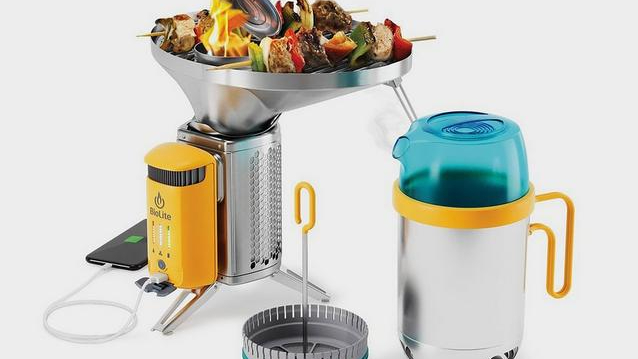
Camping stove: BioLite CampStove 2+
Bringing along a camp stove to cook on, as well as to make coffee or tea in the morning, is essential. When it comes to camping at festivals, it can also save you some serious money, as eating at the various (highly tempting) food stalls can quickly become expensive.
So, the BioLite CampStove 2+ was the perfect addition to my smart camping setup. Before trying it, I’d have struggled to think of how a camping stove could be smart, but the BioLite CampStove 2+ fits that description in several ways. It’s compact and easy to carry around, and it doesn’t use gas – you can even use sticks and twigs you find lying around as fuel. This is far better for the environment, and will save you money in the long run. It also means you don’t have to carry a gas canister around with you.
It also has a built-in 3,200 mAh battery which charges itself when you use the stove – and a USB port allows you to plug in a smartphone to charge.
I tried the BioLite CampStove 2+ as part of the CampStove Complete Cook Kit, which bundles it with a kettle, coffee press, and grill. While it’s a bit slower to boil the kettle than a gas stove (it takes around four and a half minutes), the fact you don’t need gas and the built-in battery makes it incredibly useful. If you’re camping somewhere where wood to use as fuel is difficult to source, you can also use wood pellets.
Other glamping gadgets
While organizing my trip, I wanted to see if there were any other gadgets I could take along that may not be as essential as tents and stoves, but help make the camping experience more enjoyable and comfortable.
For lighting, which to be honest is pretty essential once the sun goes down, I tried several lights from Hoto, a company that makes stylish tools. The first was the Hoto Flashlight Power, an attractive-looking torch that comes with a rechargeable lithium battery, and two lighting modes.
It works as a normal torch, but with a twist of its body, it glows from the side as a lamp, which makes it a useful light for both walking back to your tent in the dark, and then seeing what you’re doing when you’re in the tent. A built-in magnet is handy for sticking it onto a metal surface, and while you might not often have a lot of metal hanging around when you’re camping, if you have a campervan or caravan, it could prove useful. It’s definitely one of the tools I’ll be using outside of camping as well.
The other lamp is the Hoto Camping Light, which is a stylish device that can be charged via USB-C, is waterproof, and has three light modes. The built-in hook allowed me to hang it in the tent easily, and between that glowing warmly in my compact tent and its large inflatable mattress, I was making a seriously comfy little setup.
Slightly less successful was the Wastou Camping Fan with LED Lantern from Amazon. This device can hang from the top of a tent, and can act as both a light and a fan. You can recharge it using USB, and charge other devices from its battery, and it has a remote control to adjust the light and fan speeds.
It’s a decent gadget for the price (around $30/£26), and it worked well. The issue was that due to the low ceiling of the tent, and the tall height of the inflatable mattress, I was a bit too scared to leave the fan going while I slept, in case I sat up in the night and got an all-too close shave from the spinning blades.
For campers with taller tents, or less indulgent inflatable mattresses, this probably won’t be an issue, but it’s a good reminder to think things through before you go on a spending spree.
I also took the Wadeo Portable Shower. This simple and affordable gadget might have been the best device out of them all. It’s a small unit that you place in a bucket of water. It then pumps the water through a shower head (attached via a tube). An LED display at the top gave me a temperature reading for the water, and it can be charged up via USB. This allowed me to have a shower every morning, and while the water was pretty cold, it meant I could start each day of the festival with a bracing shower that left me feeling awake and smelling less offensive than many of the other revelers.
The smart camping gear I brought with me might seem a bit excessive – it certainly got a few chuckles from the people I was camping with – but they genuinely made my trip comfortable and enjoyable.
After I had my tent set up and mattress inflated in less than five minutes, allowing me to crack open a beer and watch my campmates struggle with their kit in the blazing sun, I promised myself I’d never go camping again without these gadgets.

Matt is TechRadar's Managing Editor for Core Tech, looking after computing and mobile technology. Having written for a number of publications such as PC Plus, PC Format, T3 and Linux Format, there's no aspect of technology that Matt isn't passionate about, especially computing and PC gaming. He’s personally reviewed and used most of the laptops in our best laptops guide - and since joining TechRadar in 2014, he's reviewed over 250 laptops and computing accessories personally.